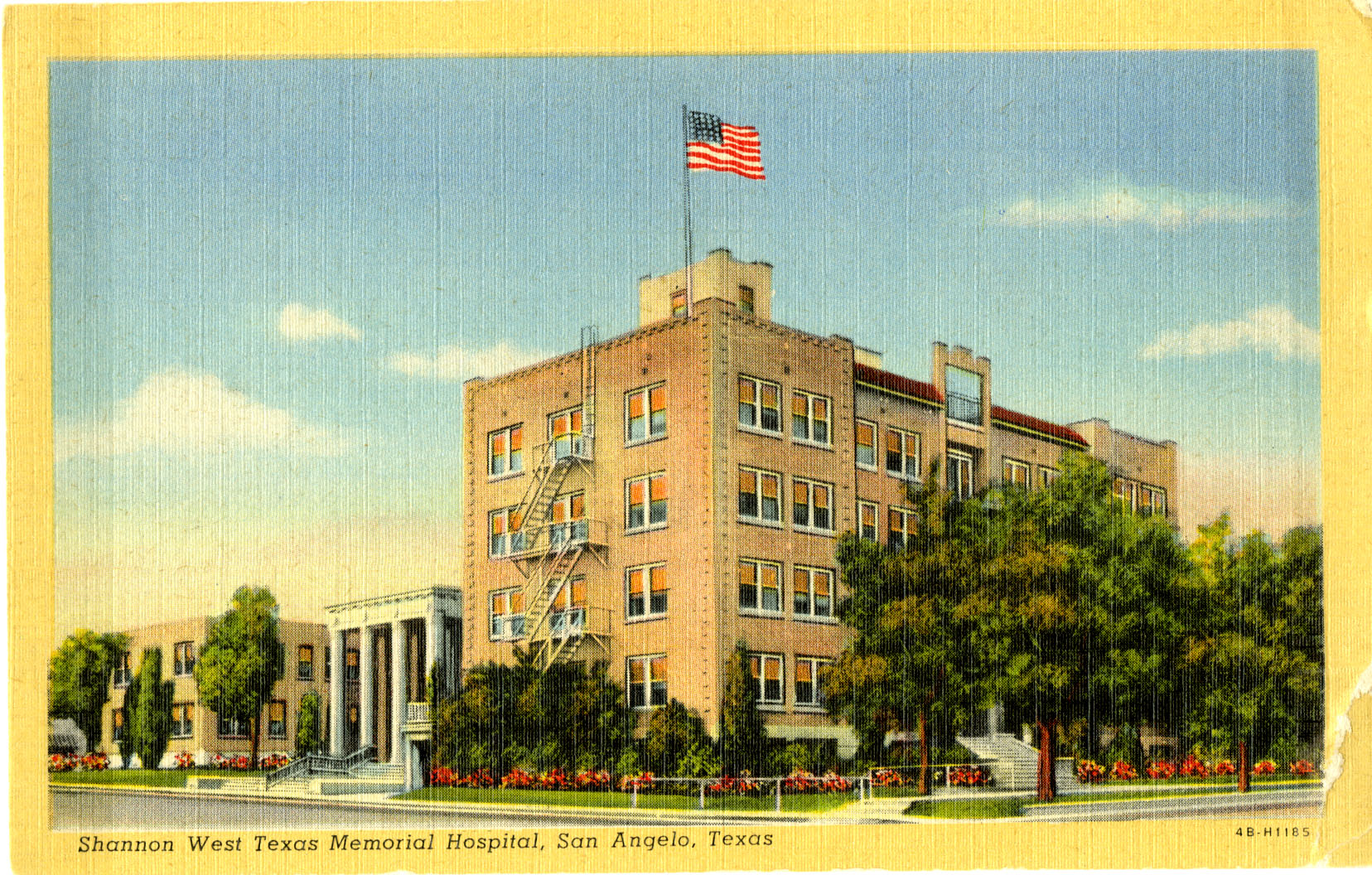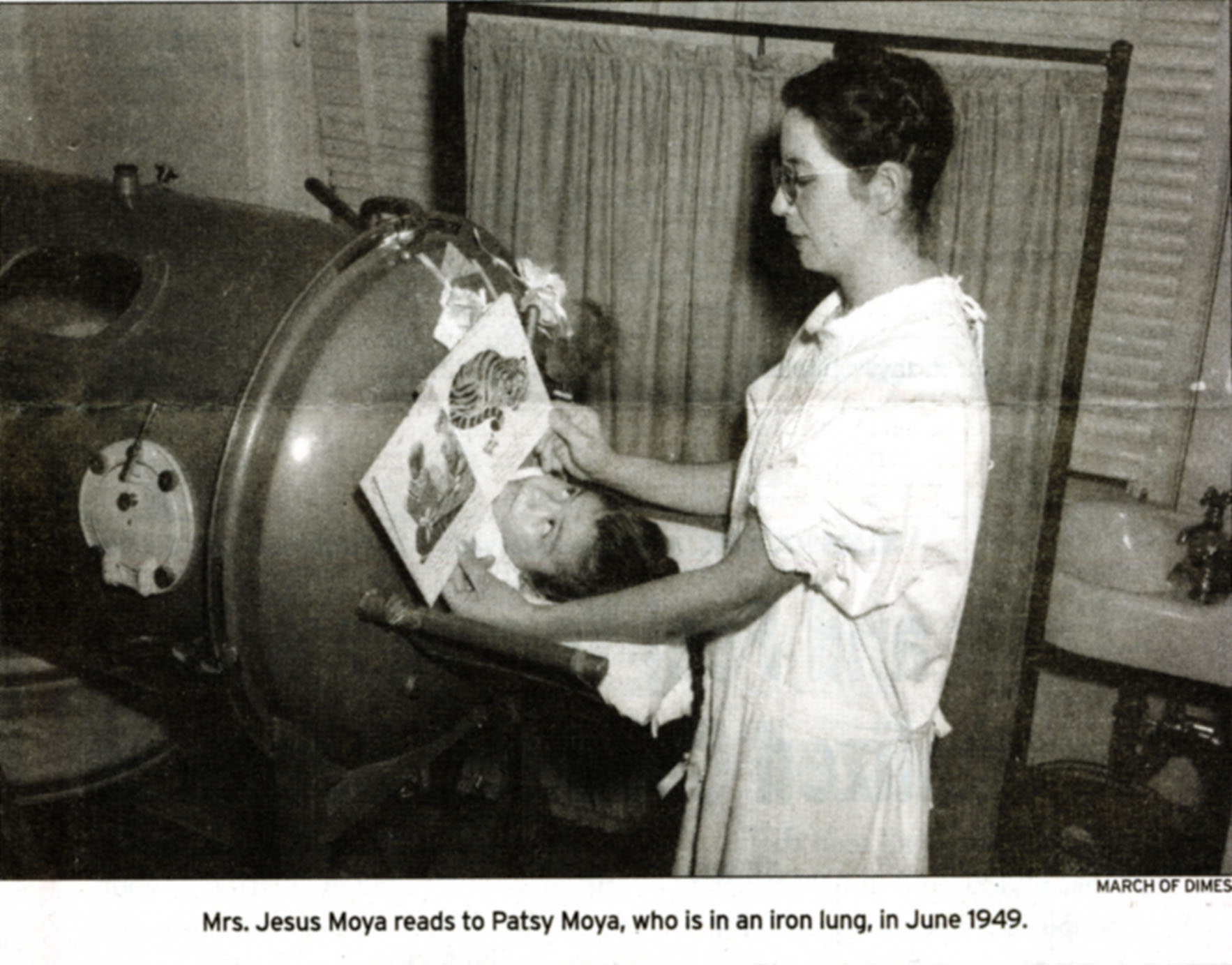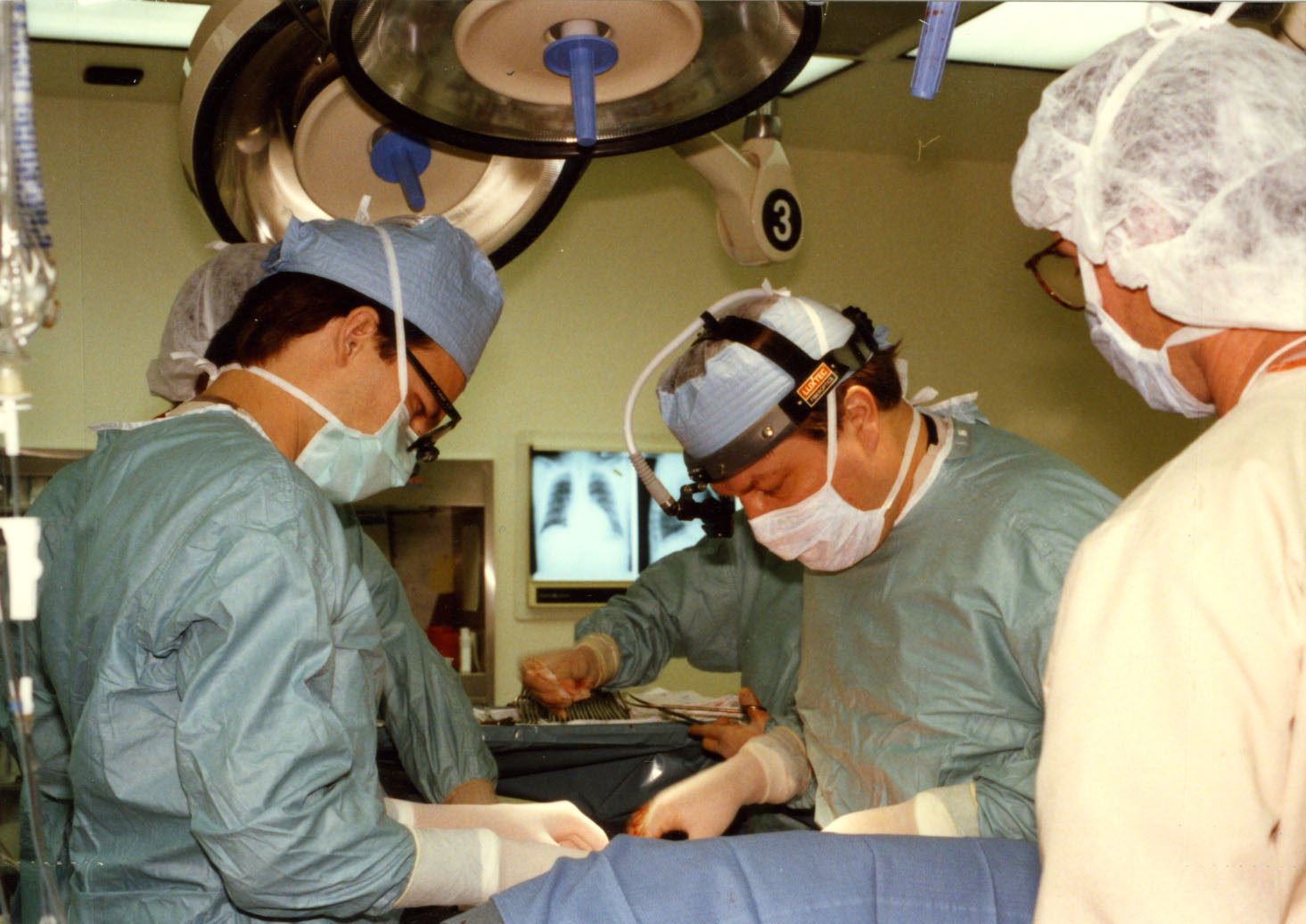Celebrating 100 Years of Healthcare in Downtown San Angelo
- Category: Community, News, General Blog
- Posted On:
- Written By: Allison Moore

November 2023 marks one hundred years since the creation of the first hospital in downtown San Angelo, launching a long-standing tradition of exceptional healthcare in the Concho Valley that continues today with Shannon Medical Center. But before there was Shannon, the cornerstone of another hospital was laid on November 15, 1923.
Drs. Henry P. Rush and William F. Chambers founded the San Angelo Physicians and Surgeons Hospital. The two railroad surgeons set up the 15-bed hospital in the former home of businessman John Findlater (located at the southwest corner of south Magdalen Street and west Harris Avenue). One month later, Rush and Chambers established a nursing school and welcomed the first 11 students.
Rush, Chambers, Dr. J.B. Chaffin, and Dr. C.T. Womack served as the first directors of the Physicians and Surgeons Hospital. Rush went on to organize the Clinic-Hospital on Beauregard Avenue, which became San Angelo Community Medical Center.
In 1927, the Concho Valley Missionary Baptist Association purchased the Physicians and Surgeons Hospital (renamed San Angelo Hospital or Concho Valley Baptist Hospital) and began construction on a four-story brick hospital on the south side of Harris Avenue. However, the Baptist Association faced financial difficulties by 1932, and only the bottom two floors of the new hospital were complete. The hospital and the nursing school were on the verge of closing– but who could possibly afford to buy an entire hospital in West Texas during the Great Depression?
After the death of Margaret Shannon in late 1931, a group of local businessmen were tasked with founding and maintaining a charity (not-for-profit) hospital in San Angelo, as specified in J.M. and Margaret Shannon’s will.
Led by Dr. J.S. Hixon, Margaret Shannon’s physician, the Shannon trustees purchased the unfinished brick hospital on Harris Avenue, the equipment and furnishings and the Findlater House. After finishing the top two floors and other improvements, the newly named Shannon West Texas Memorial Hospital began service in 1932. Staff included six physicians, seven graduate nurses and 18 student nurses.
Shannon West Texas Memorial Hospital’s School of Nursing continued to utilize the Findlater house as student nurse housing until 1934. The Nurse’s Home then moved to 22 S Magdalen Street (current site of Shannon Women’s and Children’s Hospital) until 1941, when a white “square” building was constructed at 120 E Beauregard Avenue. Third, fourth and fifth floors were added to the hospital in 1945.

Though the poliomyelitis (polio) epidemic did not reach its height in the U.S. until 1952, San Angelo saw the highest case rate per capita in the country in 1949. Shannon West Texas Memorial Hospital treated 420 confirmed cases of the disease that year; of those cases, 28 died and 84 were permanently paralyzed. By mid-June, pediatric polio patients occupied half of the 160 available beds at the hospital.

Surveyance by the National Infantile Paralysis Foundation credited Medical Staff Leader Dr. Lanier Bell’s aggressive and proactive treatment plan with promising recovery rates for San Angelo’s polio patients. The hospital operated eight iron lungs (negative pressure ventilators that gave breathing support to paralyzed patients by increasing and decreasing air pressure around the chest cavity) continuously, and polio patients were placed on a rigorous physical therapy plan to recover mobility. This strategy was praised as comparable to large cities like Chicago and New York: as one National Infantile Paralysis Foundation representative remarked, “The only damn thing you [Bell] need is some help.”
In the 1950s, Shannon West Texas Memorial Hospital added air conditioning and a nine-bed recovery unit. A major building project in 1963 added another wing facing Harris Avenue, along with an increase to 180 beds and a six-bed Intensive Care Unit (ICU).
Beginning in 1941, the Shannon School of Nursing maintained a close relationship with Angelo State College (now Angelo State University). All science classes were taught on the college campus by 1944, an arrangement that continued until the Shannon School of Nursing closed in 1968. In its 36 years of operation under the Shannon name, the Nursing School graduated 565 registered nurses – many of whom continued employment at the Shannon hospital after graduation.
Robust updates continued when the hospital received the first nuclear accelerator for cancer treatment in the Concho Valley in 1970 and implemented the first life support systems in 1971. 24-hour Emergency Room service began in 1975.
In that same year, Norma Ballard (wife of a Shannon physician) helped charter the Shannon West Texas Memorial Hospital Auxiliary, a volunteer program uniting the care of Shannon patients with the personal touch of volunteer service that still exists today. The program grew to include 140 members with over 10,000 hours of service by the end of the 1970s.
Construction began on a larger, up-to-date hospital facility on the north side of Harris Avenue in 1979. The $18 million, six-story hospital building boasted updated Emergency and laboratory departments and state-of-the-art private rooms. In December of 1981, the remaining 115 patients were transferred across Harris Street from the “old” facility to the new one using ambulances and transport vans.
The “old” Harris Avenue hospital was imploded in August 1982 to make way for the Angelo Clinic Association (later Shannon Clinic), drawing a crowd of spectators to downtown San Angelo. The “new” Shannon West Texas Memorial Hospital was dedicated in December 1982.
In 1983, Shannon West Texas Memorial Hospital began partnering with outlying communities in the region to provide urgent care and general practice needs through the Shannon Regional Health network. Operating at different intervals up until the 2010s, these locations included: North and South Shamrock in San Angelo, Ballinger, Menard, Brady, Sterling City, Coleman, Robert Lee, Big Spring, Ozona, Del Rio, Winters, Village, Bronte and Schleicher County (Eldorado). Shannon offered the first hospital-based home healthcare service in the Concho Valley in 1984.
In 1987, Shannon West Texas Memorial Hospital became Shannon Medical Center. The name change reflected the growth and expansion of the hospital’s services since its founding in 1932 and created cohesion among additional locations.
Shannon Medical Center became the first hospital in the Concho Valley to perform open-heart surgery in 1988. The Medical Plaza building (now Shannon Clinic – Magdalen) also opened that year, and housed the Regional Cancer Center, the Shannon Wellness Center and physician offices.

Another major building project in 1993 brought big changes for young patients at Shannon. The Shannon Women’s and Children’s Hospital (201 E Harris Avenue) was designed as the first dedicated facility for specialized care for women and children in the Concho Valley and includes an inpatient pediatric unit, a labor and delivery unit, a women’s health unit and designated women’s surgery unit and a Level II specialty care nursery. A glass-enclosed walkway was added over Harris Avenue, connecting the Women’s and Children’s Hospital and Shannon Medical Center; this feature was the first of its kind constructed in downtown San Angelo.
At the same time the Women’s and Children’s Hospital was opening in 1994, Shannon Medical Center established Medivac 1 (now AirMed 1), the first emergency transport helicopter service for the Concho Valley. Given the vast geographic distance of Shannon’s service area of 25 counties, the emergency transport helicopter greatly expanded the flexibility and reach of critical emergency care to rural West Texans.
In 1996, Shannon purchased Concho Valley Regional Hospital (formerly St. John’s Hospital) and renamed the facility Shannon Medical Center – St. John’s Campus. This addition included combining the active volunteer forces at both locations into the Shannon Medical Center Auxiliary. Shannon Medical Center became the first hospital to provide pediatric chemotherapy and the Shannon Regional Heart Center opened in the same year.
The turn of the millennium brought more expansion to Shannon Medical Center’s services. The hospital was designated as a Lead Level III Trauma Center in 2000, further establishing Shannon Medical Center’s dedication to excellence in healthcare in the Concho Valley. Shannon Women’s and Children’s Hospital became the first licensed neonatal intensive care unit (NICU) in the area in 2002, and then became a Children’s Miracle Network partner hospital in 2003.
In 2020, Shannon Medical Center purchased San Angelo Community Medical Center, which was renamed Shannon South Campus. Shannon was also invited to become part of the Mayo Clinic Network in 2022. Members of this network are carefully vetted independent healthcare organizations who have special access to the expertise of Mayo Clinic research and specialists.
What began as a railroad surgeon’s hospital inside a home on Harris Avenue has initiated a legacy of exceptional healthcare for families in the Concho Valley and beyond.
Shannon would like to thank the administrators and staff of the Dr. Ralph R. Chase West Texas Collection at the Mayer Museum at Angelo State University for their assistance in creating this series of historical blog posts. Learn more about the West Texas Collection at www.angelo.edu/community/west-texas-collection.
.jpg)
